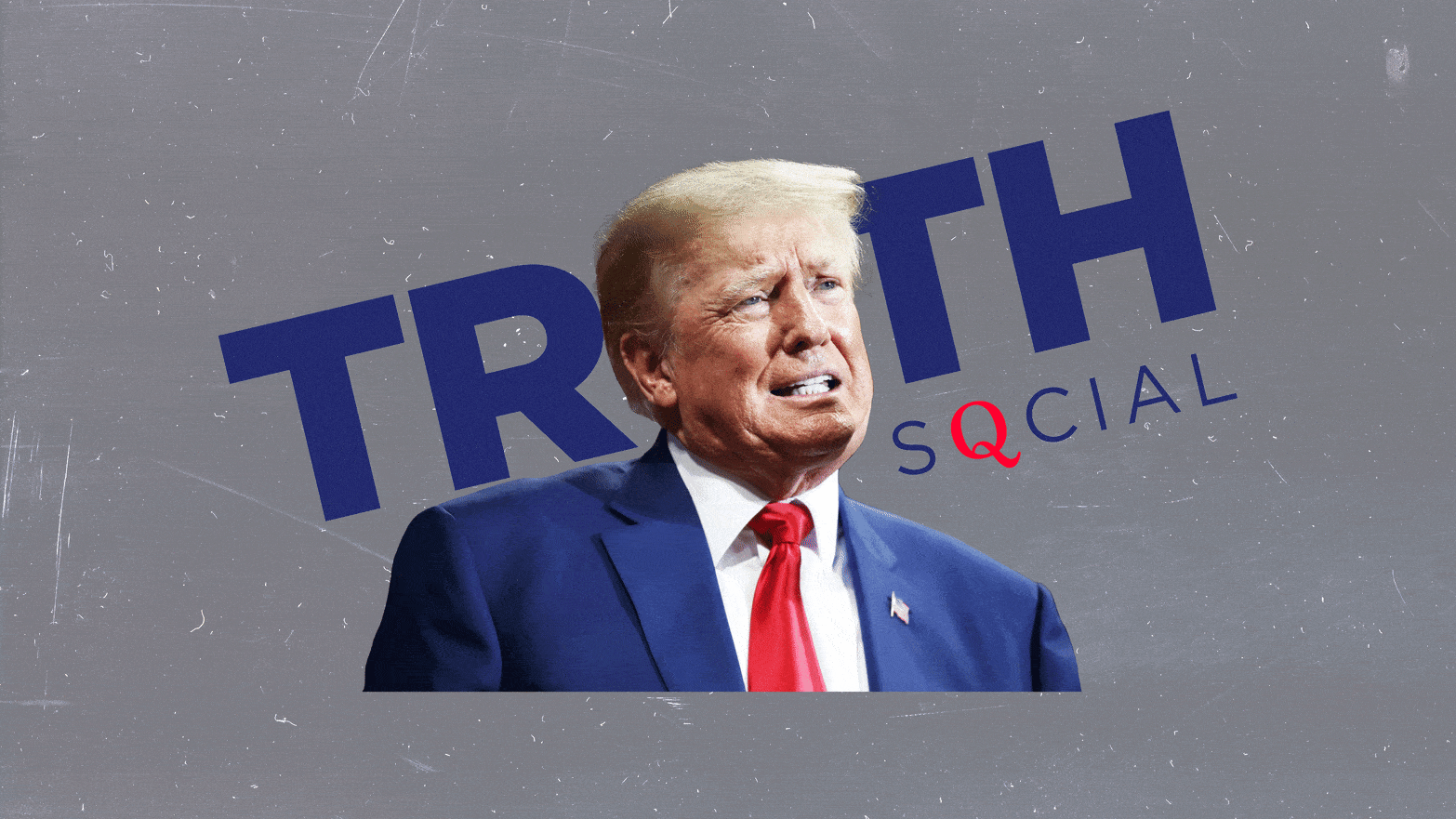Former President Donald Trump has boosted content from accounts that support QAnon conspiracy theories on his Truth Social platform at an accelerated rate, ever since the FBI searched the Florida country club resort he calls home. In doing so, Trump has at last obliterated any of the plausible deniability previously afforded to him in his prior crossovers with the false conspiracy theory’s followers.
It’s no accident that QAnon supporters are using the former president’s social media platform, Truth Social. Appealing to them was an explicitly stated strategy to build out its user base.
Media Matters senior researcher Alex Kaplan chronicled efforts by CEO and former congressman Devin Nunes and one-time board member and Trump administration official Kash Patel to court the community, including the early promotion of an account that appeared to be emulating the pseudonymous author, “Q”—the heart of the QAnon movement.
Truth Social has verified 47 QAnon-promoting accounts with more than 10,000 followers each, according to an analysis by NewsGuard. By Kaplan’s count, Trump has used his Truth Social account on the platform to boost at least 50 distinct QAnon-supporting accounts to his more than 4 million followers.
Kaplan, in a phone interview, said QAnon content “plays a significant role in Truth Social’s ecosystem” and that Trump’s sharing of content from QAnon accounts since the FBI executed a search of Mar-a-Lago echoes his history of doing the same on Twitter before he was banned. Trump had shared posts from QAnon accounts prior to the FBI search, but Kaplan said the saturation of such content on his Truth Social feed has been particularly high since the search.
“There always seems to be a correlation between the amount of times Trump is amplifying QAnon accounts and periods where I’d say he’s under stress,” Kaplan told The Daily Beast. “QAnon accounts are usually ones that are giving him praise and reassurances, which I’m sure he likes.”
Being a man who values devotion to himself above all else, Trump surely appreciates an online community that imagines he is a kingly figure engaged in a clandestine battle against his perceived enemies. And even as broad swaths of the movement have evolved from cracking riddles left in one of the internet’s many cesspools, they continue to churn a steady flow of nonsense for Trump and his defenders to pluck and deploy in a smokescreen they hope will separate them from any semblance of accountability.
Last month, Trump posted a video to his Truth Social account that contained an audio track that QAnon believers and researchers believed was titled “WW1WGA”: an unmistakable catchphrase of the conspiracy movement. A Trump spokesperson disputed the identification of the song, telling Vice News that the song was actually one called “Mirrors” by composer Will Van De Crommert. Experts said the songs were identical, though Vice reported that “Mirrors” was uploaded online a year before its QAnon-titled copy. Regardless, the QAnon community on Truth Social declared the video as proof that the Q author was who they thought they were. Kaplan said that between the video and Trump’s repeated sharing of content from QAnon accounts, the conspiracy theory’s followers are “noticing this [pattern] and taking it as a sign” they’ve been right all along.
True believers think Q was a high-level government official with insights into an imagined secret plan for Trump to thwart political, intelligence, business, and entertainment leaders orchestrating global downfall and engaging in satanic forms of child sex abuse. Forensic linguists and documentarians would grow to suspect that Ron Watkins, notorious for his role as an administrator on the forum board where Q posts were found for most of the author’s active time online, was actually responsible for at least some of the posts.
Since debuting in 2017, Q went on to post thousands of cryptic messages that formed the foundation for a vivid tapestry of conspiracy theories that would help drive several people to criminal acts, including violence, kidnapping, terroristic threatening, murder, and participating in the Jan. 6 Capitol riot. The movement built around Q posts gained so much traction that the FBI would identify it by name in a 2019 memo about threats extreme conspiracy theorists posed to national security.
In spite of those readily apparent dangers, Trump and his family members, lawyers, and notable political allies have all cozied up to the conspiracy theory movement’s supporters in some form.
Hallmark language used by QAnon supporters has receded on mainstream social media platforms, but many of the communities and influencers that brought its theories to life remain intact on alternative ones, now including Truth Social. Even as the community largely moved beyond its obsession with the musings of Q, causing some writers to erroneously identify the movement as dead, followers of the theories have remained energized and active. Some have set their gazes above their keyboards, choosing to run for office or involve themselves in a nationwide election denialist movement that has captured the loyalty of nearly half of Republican nominees on the ballot this fall. One influencer explicitly hopes to influence elections this year.
Throughout his presidency, Trump dodged every chance to distance himself from the QAnon crowds that obsessed over his every hand motion and turn of phrase. “I understand they like me very much, which I appreciate,” he told reporters in the White House briefing room in 2020. When asked about QAnon again during a town hall interview with NBC News, Trump refused to say the theory was false and claimed he didn’t know about it before saying he heard its believers “are very strongly against pedophilia.” The former president’s recent and reinvigorated embrace of the movement’s supporters should expose how vapid those dismissals were.
Trump’s business partners welcomed them onto his platform, and it's apparent that he likes what he sees.
It’s beyond time to retire whatever plausible deniability may have been afforded to Trump’s fondness for his most conspiratorial supporters. It’s right in front of our faces, in a place called Truth.

